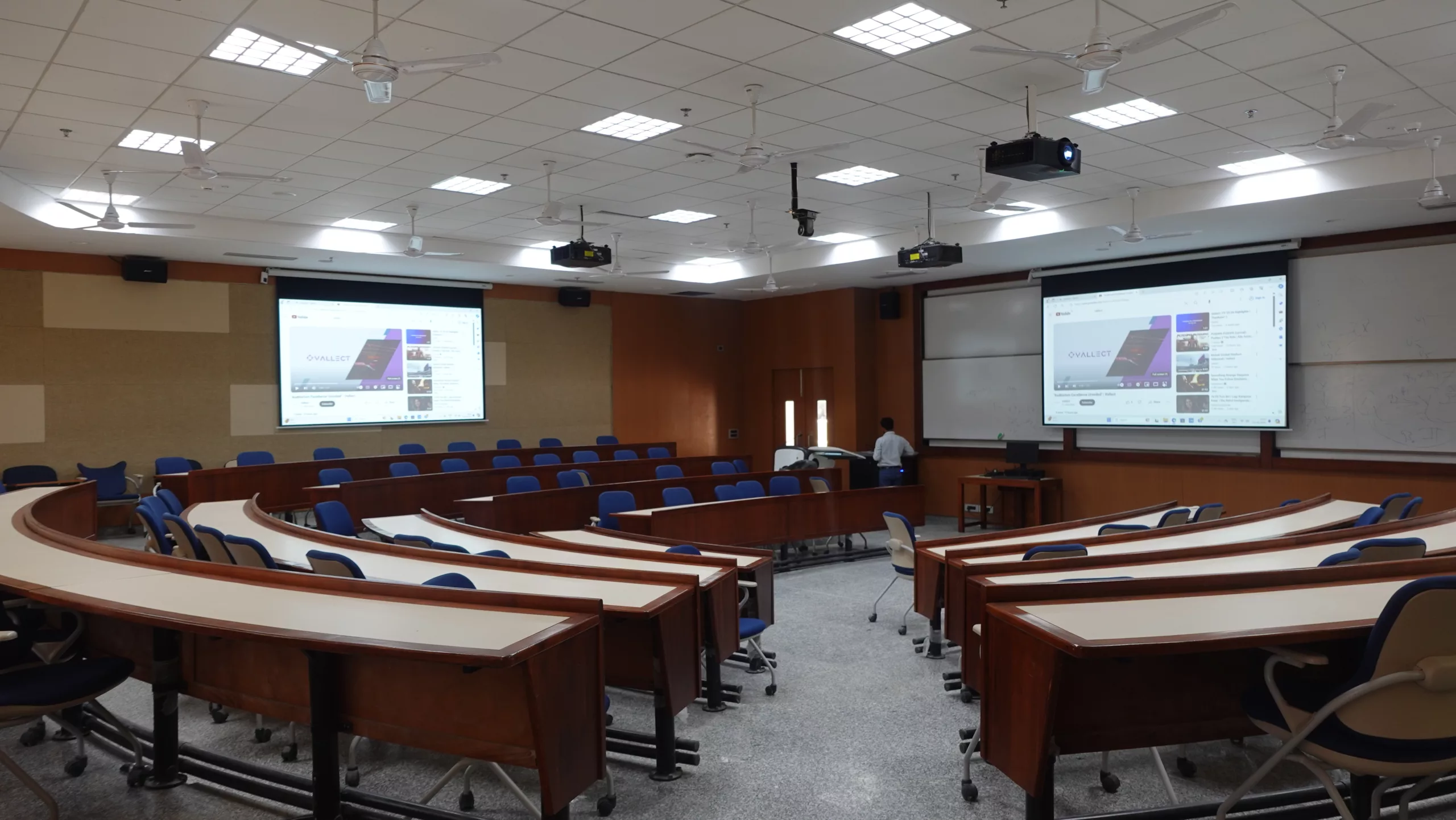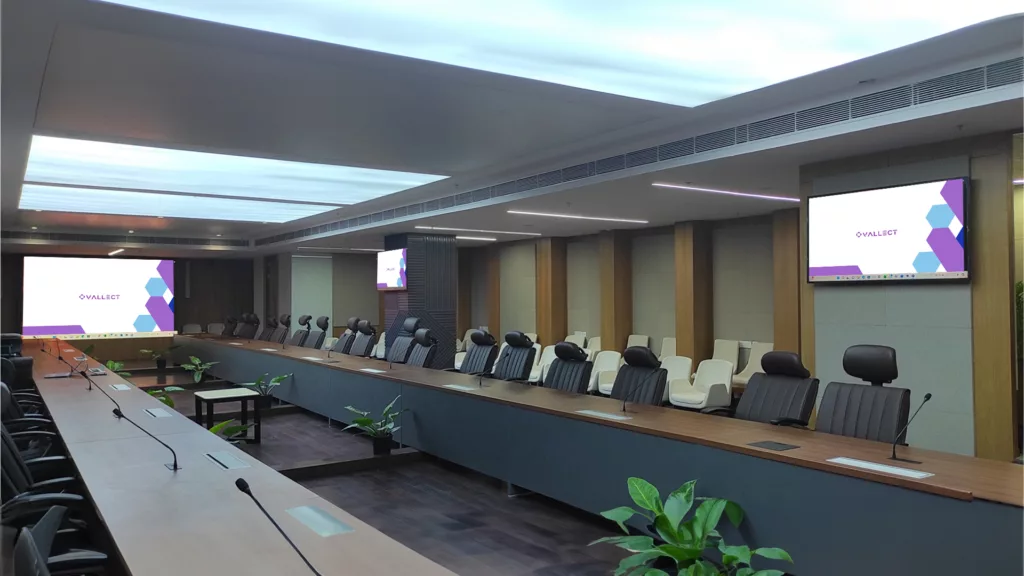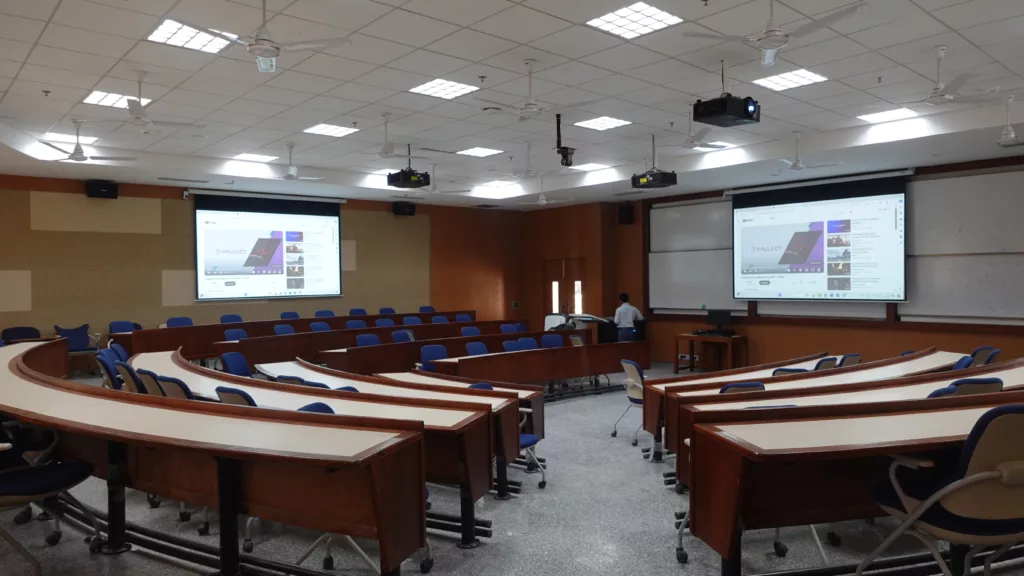
Video Conferencing Systems: From Boardrooms to Classrooms – Adapting to Change
The world has seen a dramatic shift in how we communicate, collaborate, and learn. Video conferencing system, once a tool reserved for corporate boardrooms, has permeated various aspects of our daily lives, including education. This technology has become a vital part of how we conduct business, stay connected, and continue learning, regardless of geographical barriers. As the adoption of video conferencing system continues to rise, it’s essential to understand its impact and how to leverage it effectively in different settings.

The Evolution of Video Conferencing System
What is Video Conferencing?
Video conferencing is a technology that allows individuals in different locations to communicate in real-time using video and audio. This interaction can occur through various devices, including computers, tablets, and smartphones, making it a versatile solution for both professional and personal use.
Key Features of Video Conferencing
- Real-Time Video and Audio Communication: Enables face-to-face interaction, making communication more personal and engaging.
- Screen Sharing: Facilitates the sharing of presentations, documents, and other digital content.
- Chat and Messaging: Allows participants to communicate via text during meetings.
- Recording: Meetings can be recorded for later review, useful for those who could not attend or for training purposes.
- Virtual Backgrounds: Offers the ability to change backgrounds, which can help maintain privacy and professionalism.
The Rise of Video Conferencing
Several factors have contributed to the widespread adoption of video conferencing:
- Technological Advancements: High-speed internet and sophisticated software have made video conferencing more reliable and accessible.
- Globalization: As businesses and educational institutions expand globally, the need for efficient communication across different locations has grown.
- Pandemic Influence: The COVID-19 pandemic accelerated the adoption of video conferencing as remote work and online learning became necessities.
From Boardrooms to Classrooms: The Shift
Video Conferencing in Education
The education sector has seen significant changes due to the integration of video conferencing. This technology has transformed traditional classrooms into virtual learning environments, providing numerous benefits:
- Accessibility: Students can attend classes from anywhere, breaking down geographical barriers.
- Flexibility: Schedules can be more flexible, accommodating different time zones and personal commitments.
- Enhanced Learning: Interactive features such as screen sharing, virtual whiteboards, and breakout rooms can enhance the learning experience.
- Continuity: Education can continue uninterrupted during crises like the COVID-19 pandemic.

Challenges and Solutions
While video conferencing offers many benefits, there are also challenges that need to be addressed:
- Digital Divide: Not all students have access to high-speed internet or devices. Solutions include providing necessary equipment and ensuring internet accessibility.
- Engagement: Keeping students engaged in a virtual environment can be challenging. Interactive tools and varied teaching methods can help maintain interest.
- Training: Both teachers and students need to be trained on how to use video conferencing tools effectively. Providing tutorials and ongoing support is crucial.
- Privacy and Security: Ensuring the security of online classes and protecting the privacy of participants is essential. Using secure platforms and educating users on best practices can mitigate these risks.
Moving Beyond the Boardroom
The Case for Desktop Video Conferencing
While dedicated conference rooms equipped with video conferencing systems are beneficial, they are often underutilized. Frequently, only one or two people use these rooms at a time, and many employees lack the capability to conduct video conferences from their desktops. This is despite the fact that most laptops come with built-in cameras, facilitating even the most basic video conferencing solutions.
To address this gap, consider enabling all employees to conduct video conferences directly from their desktops. There are numerous low-cost options available, such as Skype, Google Hangouts, and Zoom, making it feasible to equip everyone with the necessary tools.
Key Insights on the Future of Video Conferencing
A recent study on the future of video conferencing system in enterprises sheds light on several key findings:
- Increasing Adoption: Videoconferencing is moving beyond traditional boardrooms to smaller screens like PCs, smartphones, and tablets used by employees in their daily roles.
- Benefits: The study found that saving money on travel is a primary reason for using videoconferencing, while increased participation and engagement are also significant benefits.
- Barriers: Key challenges include:
- Lack of availability
- High costs hindering widespread deployment
- Overbooked room-based solutions
- Employee discomfort with using videoconferencing
For video conferencing to become more widespread, solutions need to be scalable, affordable, and user-friendly, with a focus on delivering a high-quality communication experience.
Addressing the Barriers
Scalability and Affordability
- Cost-Effective Solutions: Invest in budget-friendly video conferencing platforms like Skype, Google Hangouts, and Zoom. These platforms offer comprehensive features at a fraction of the cost of traditional room-based systems.
- Desktop & Mobile Equipment: Ensure all desktop/laptop systems are equipped with quality webcams & microphones. This small investment can significantly enhance the effectiveness of video conferencing across the organization.
User-Friendly Technology
- Training and Support: Provide comprehensive training and ongoing support to help employees become comfortable with video conferencing tools. This can include tutorials, live training sessions, and a dedicated helpdesk for technical issues.
- Intuitive Interfaces: Choose video conferencing solutions with user-friendly interfaces to encourage adoption.
Enhancing Communication Quality
- High-Quality Equipment: Invest in reliable webcams, microphones, and headsets to ensure clear audio and video quality.
- Stable Internet Connection: Ensure employees have access to a strong internet connection, providing guidelines or support for optimizing home network setups.
How Did Video Conferencing Gain Popularity?
Video conferencing system has gained popularity due to technological advancements, high-speed internet, and the widespread availability of smartphones and laptops. Cloud computing has made it accessible to businesses of all sizes, and globalization has made it cost-effective for efficient communication. The pandemic has forced organizations to adopt remote work policies, making video conferencing a lifeline for businesses to maintain team cohesion and communicate with clients.
Key Milestones in the Popularity of Video Conferencing
- Early Developments: Video conferencing technology dates back to the 1960s, with AT&T’s Picturephone being one of the first examples. However, it was costly and not widely adopted.
- Internet Era: The 1990s and early 2000s saw the introduction of more practical solutions like Microsoft NetMeeting and Polycom’s conferencing systems, which leveraged the growing internet infrastructure.
- Modern Solutions: The late 2000s and 2010s brought a wave of cloud-based video conferencing solutions like Skype, Zoom, and Google Hangouts, which offered more user-friendly and affordable options.
- Mass Adoption: The COVID-19 pandemic in 2020 accelerated the adoption of video conferencing technologies, making them a staple in both professional and personal communication.
Benefits of Video Conferencing
- Cost Savings: Reduces the need for travel, saving on airfare, accommodation, and other related expenses.
- Time Efficiency: Meetings can be scheduled with minimal notice and conducted without the time lost in commuting.
- Improved Collaboration: Enhances team collaboration through visual and interactive communication, regardless of geographical barriers.
- Flexibility: Supports remote work and flexible work arrangements, allowing employees to balance work and personal life more effectively.
Vallect: Leading the Way in Video Conferencing in India
For businesses and educational institutions in India, Vallect stands out as a premier video conferencing service provider. Vallect offers scalable, affordable, and user-friendly solutions that cater to the diverse needs of modern enterprises and educational institutions.
Why Choose Vallect?
- Comprehensive Solutions: Vallect Provides a range of video conferencing tools tailored to different business sizes and educational needs.
- Affordability: Competitive pricing plans ensure access to top-tier video conferencing technology without significant financial strain.
- User-Friendly Interface: Designed with ease of use in mind, ensuring quick adoption and minimal learning curves for users.
- High-Quality Performance: Reliable and high-quality audio and video to ensure smooth communication experiences.
Looking Ahead
Research indicates that video conferencing will continue to play a crucial role in both business and education. As more organizations expand their deployments and improve their systems, the technology will become even more integrated into our daily routines.
By addressing the barriers to adoption and providing the right tools and training, organizations can fully leverage the benefits of video conferencing. This will not only save costs and increase engagement but also foster a more connected, efficient, and resilient workforce and student body, ready to thrive in the digital age.
